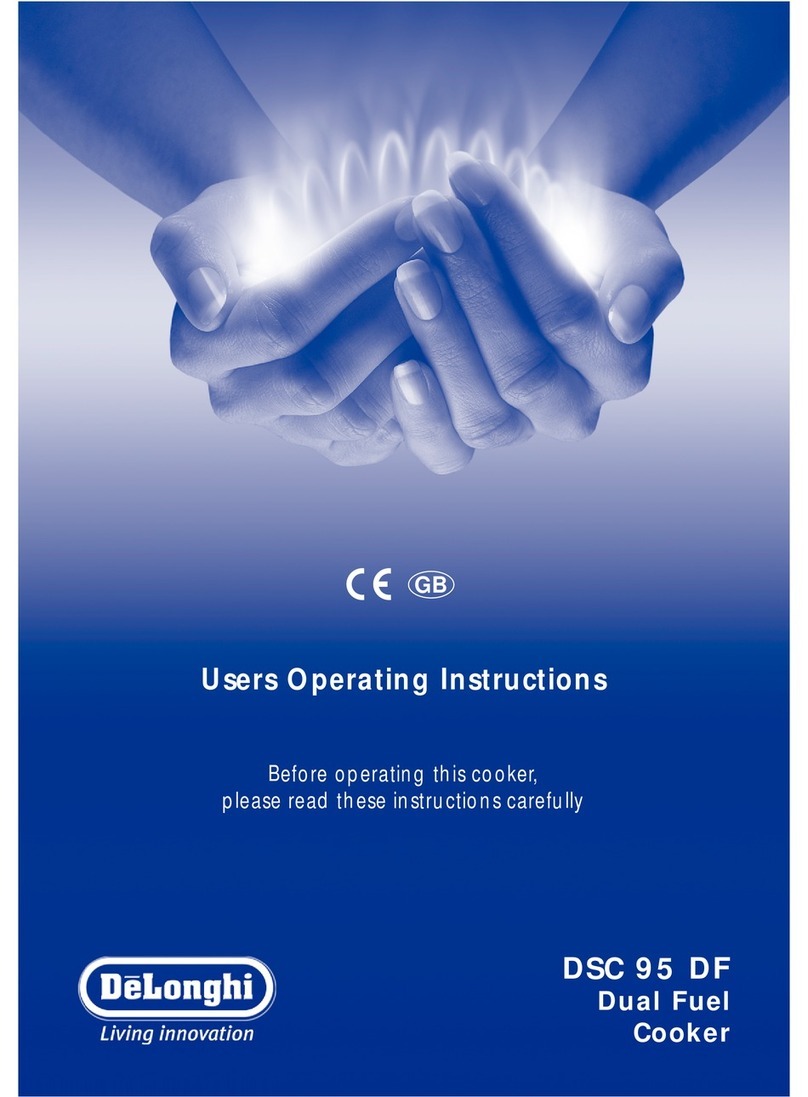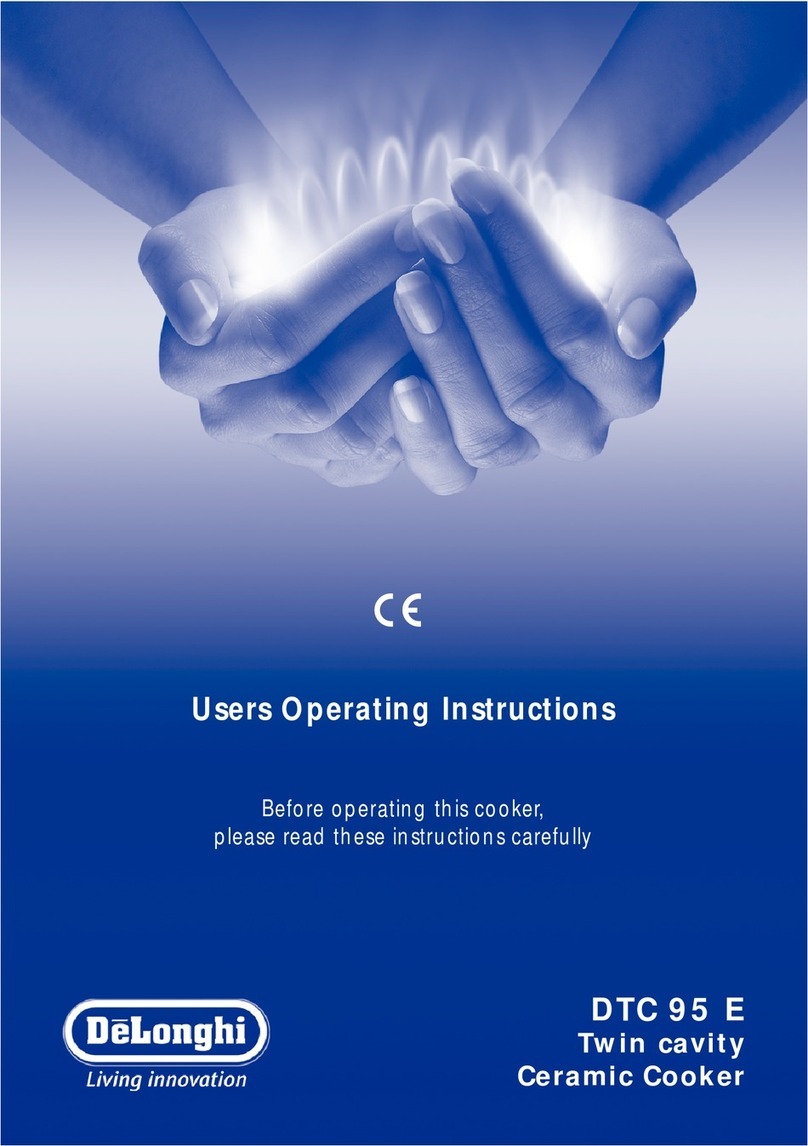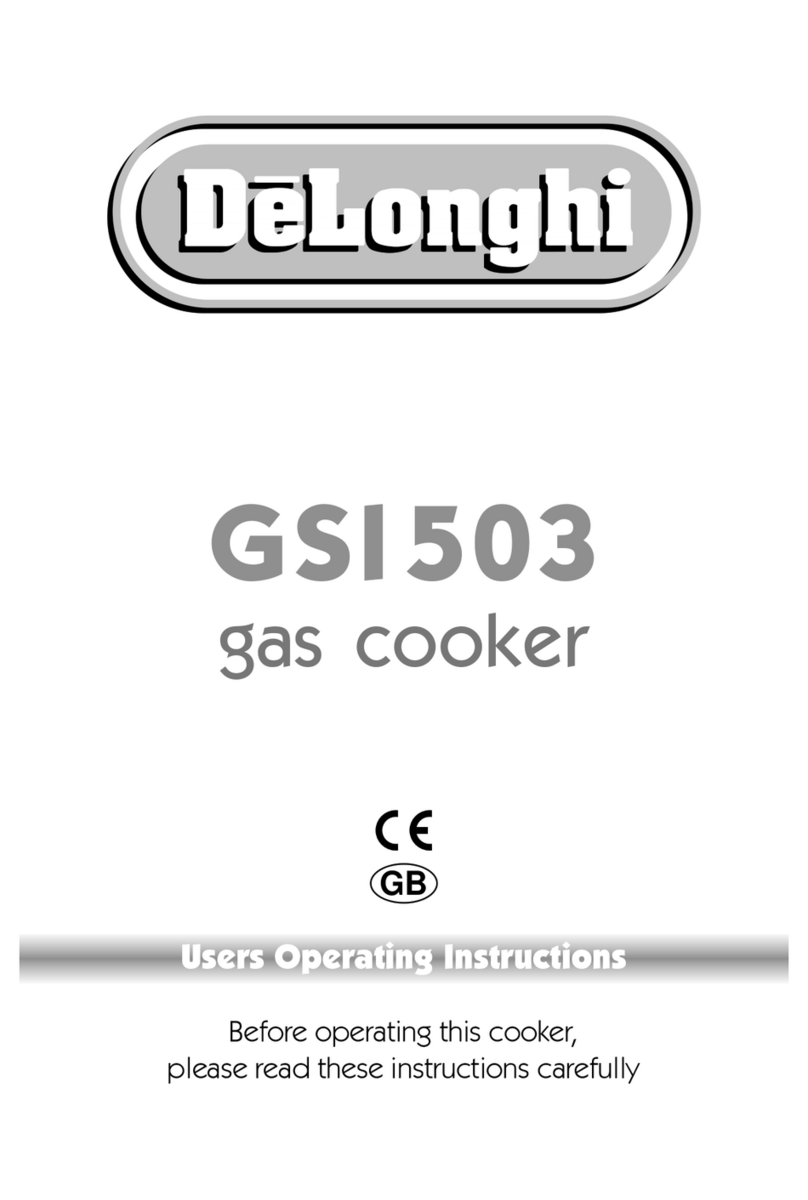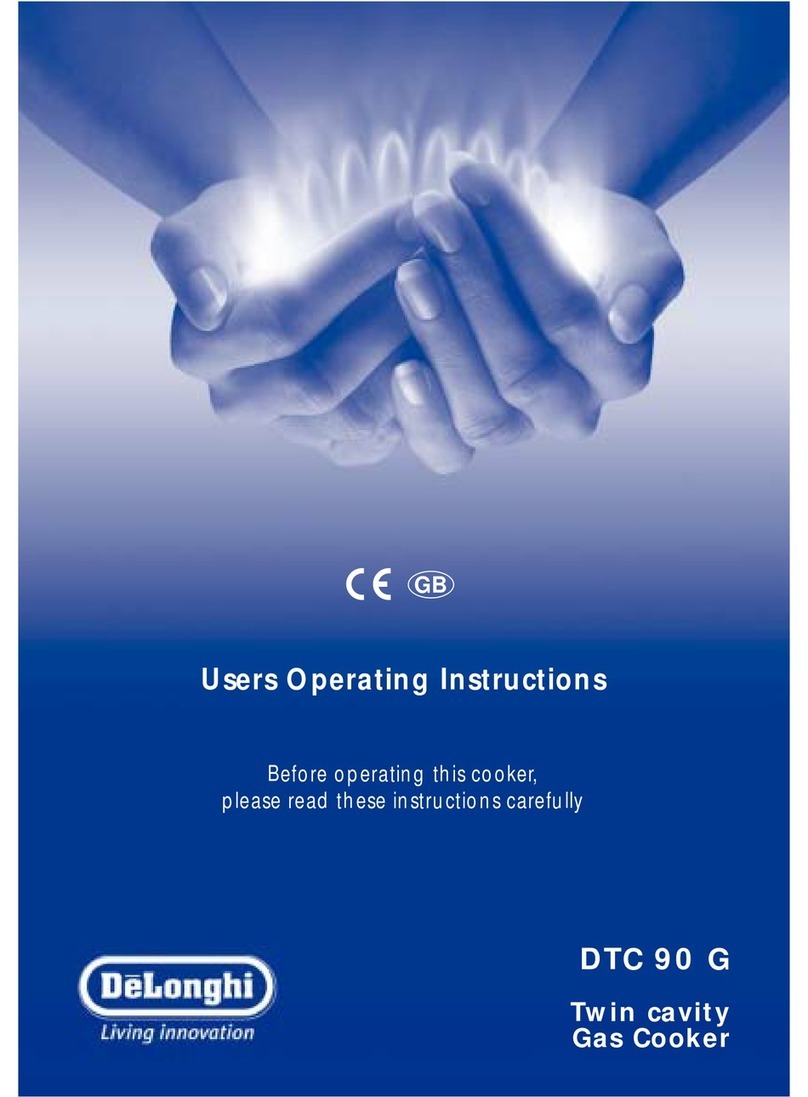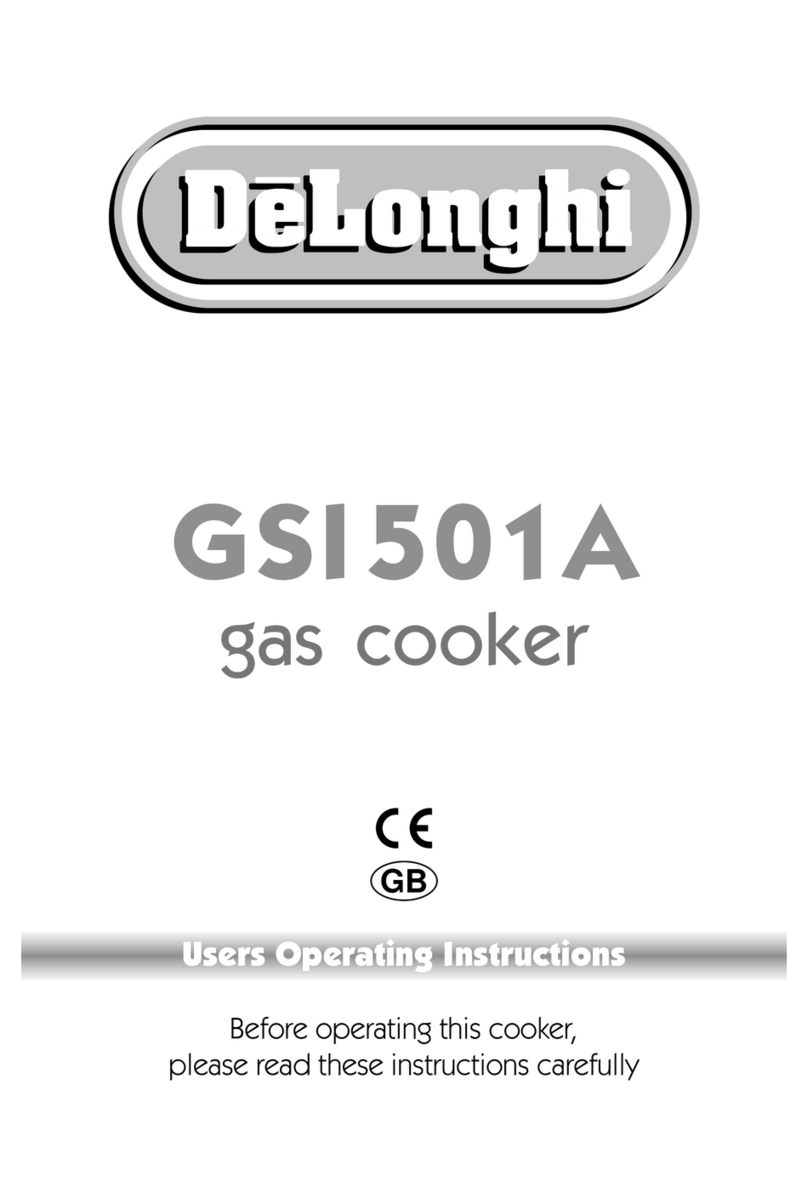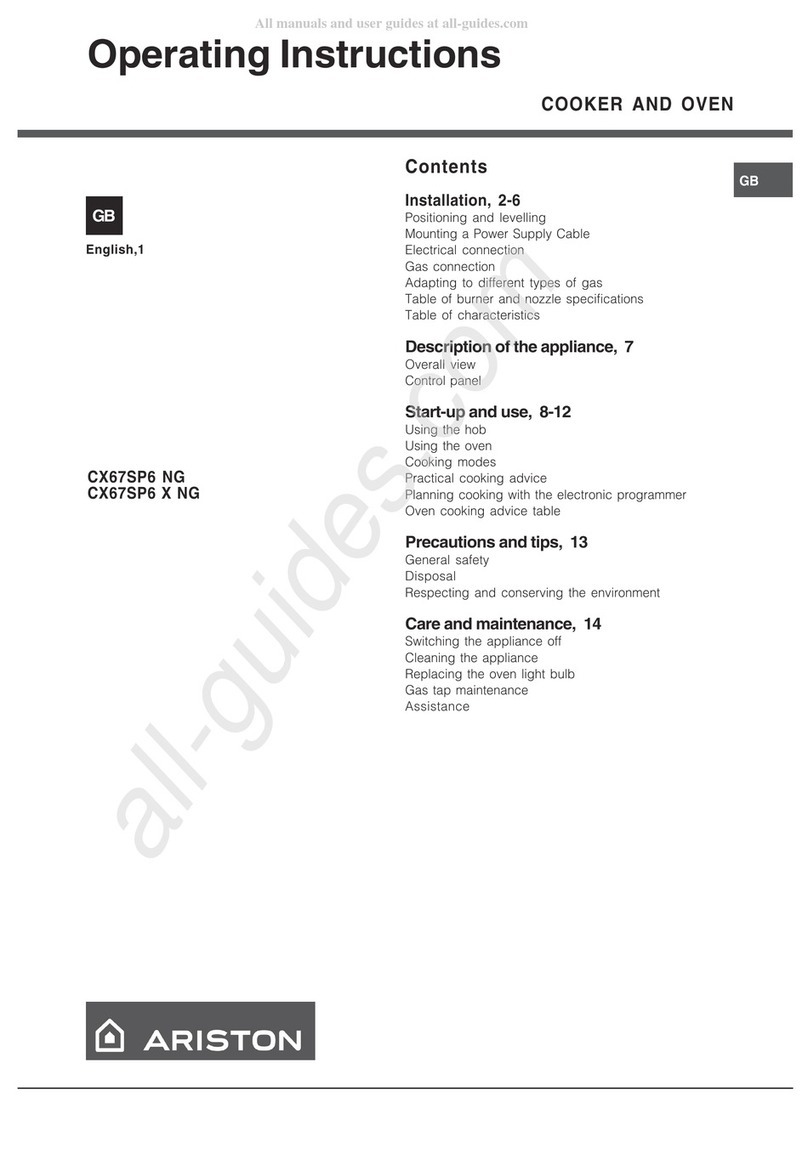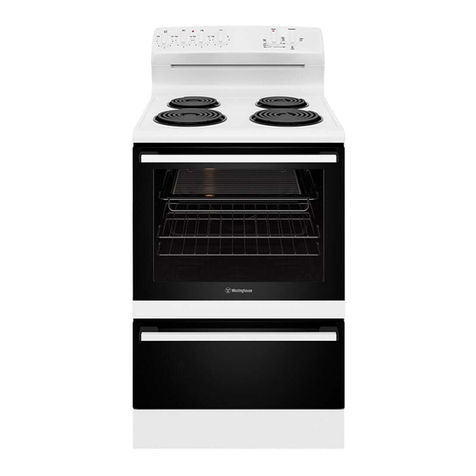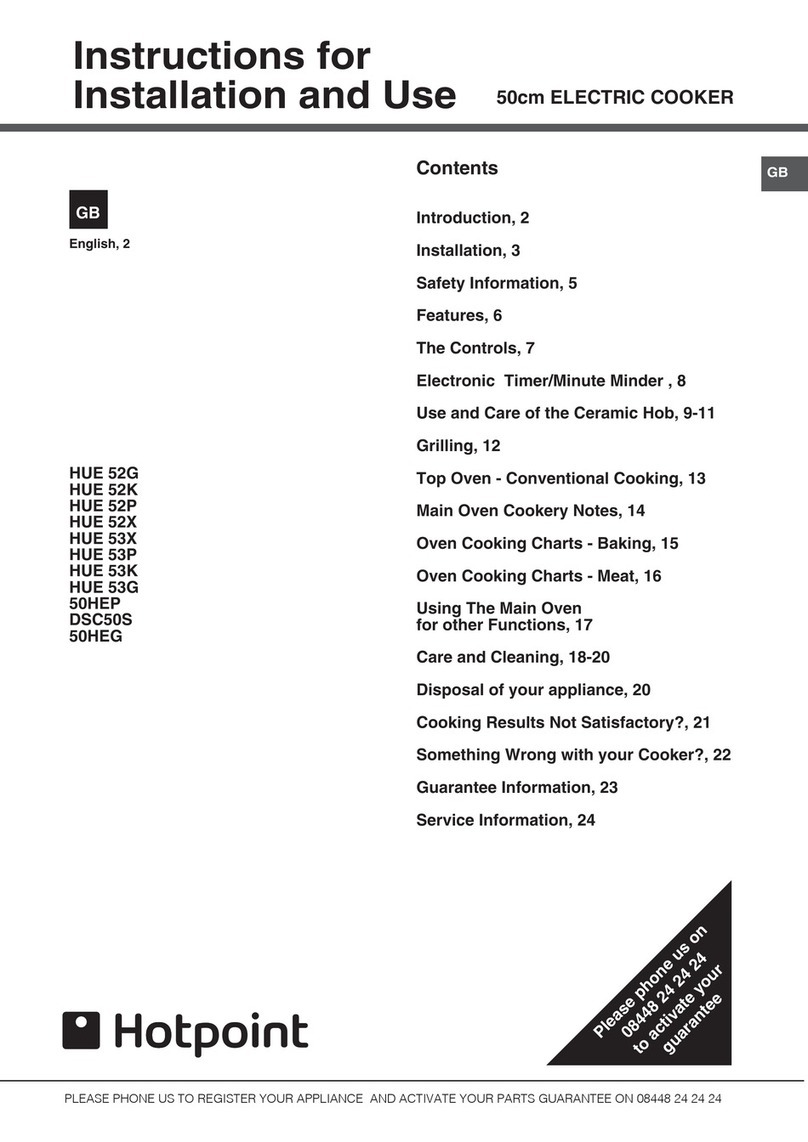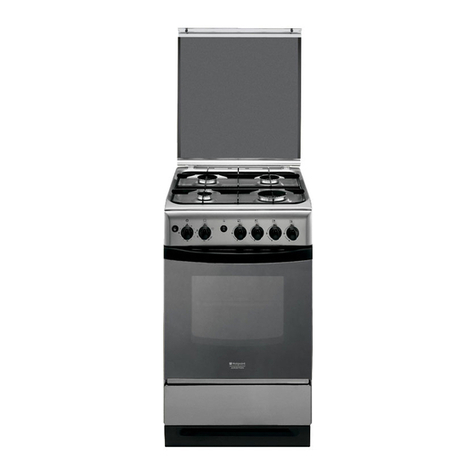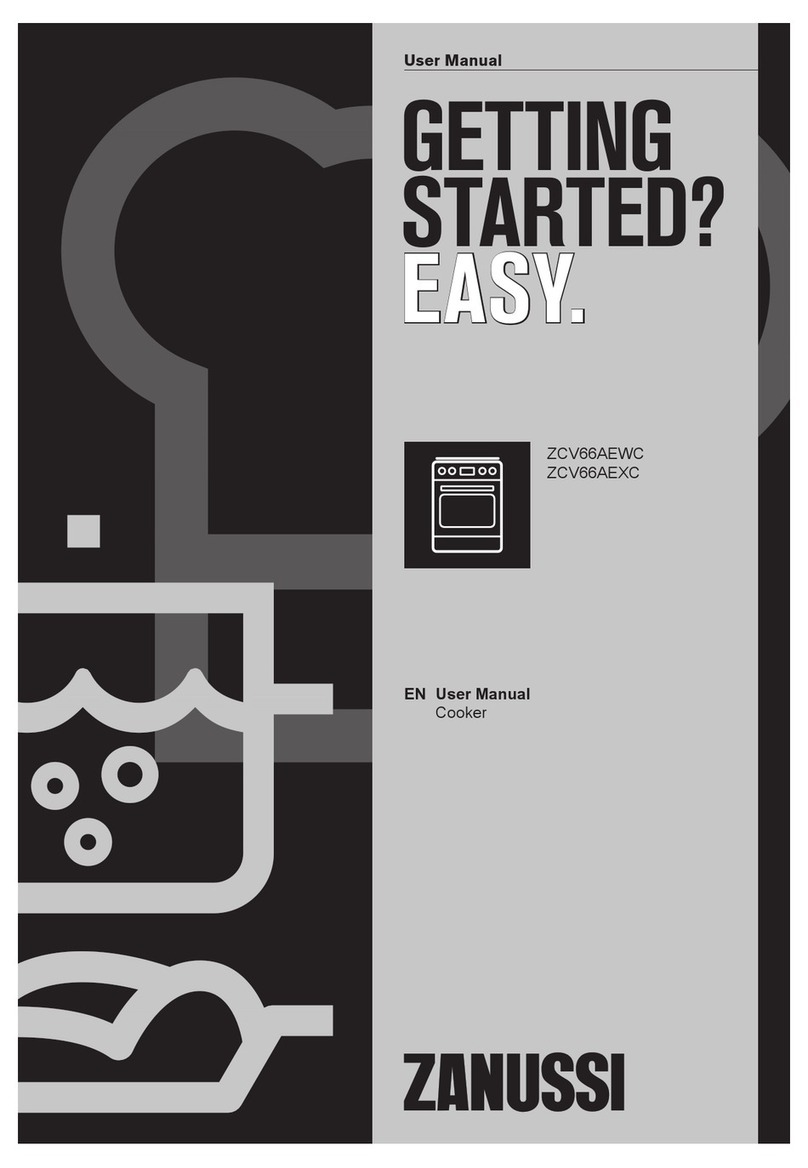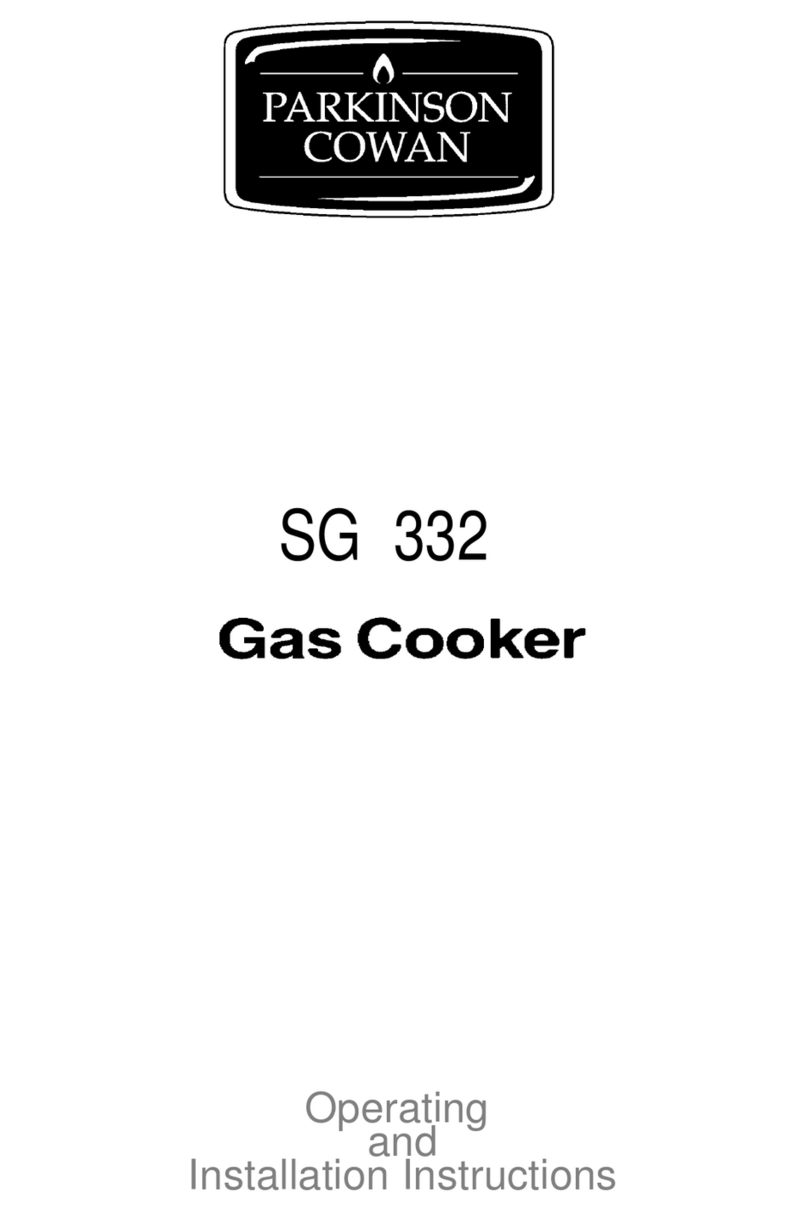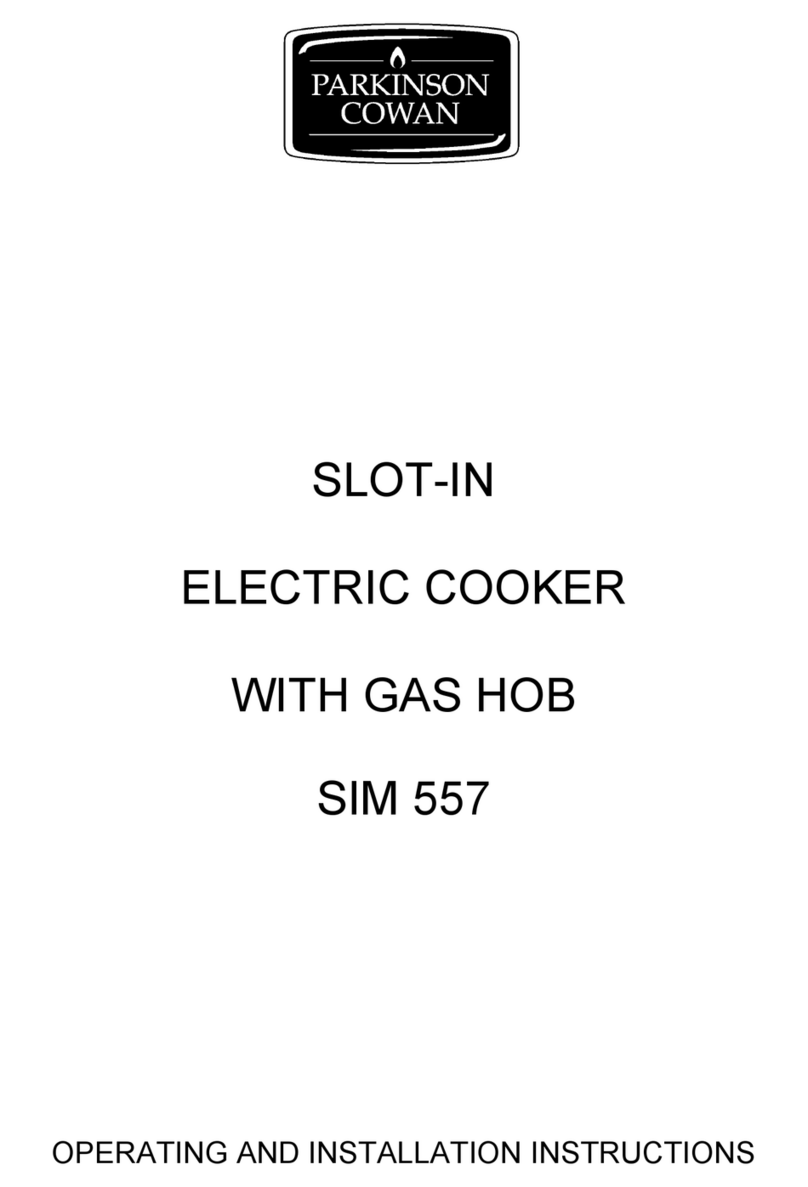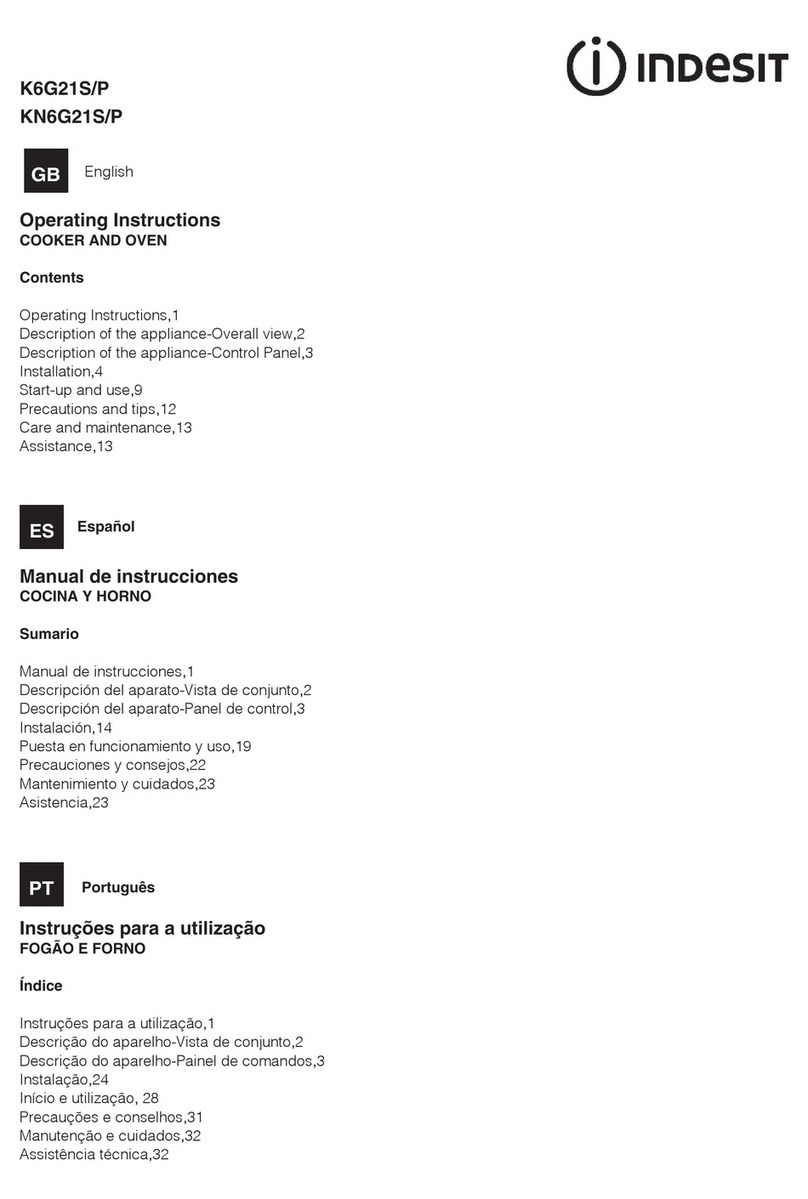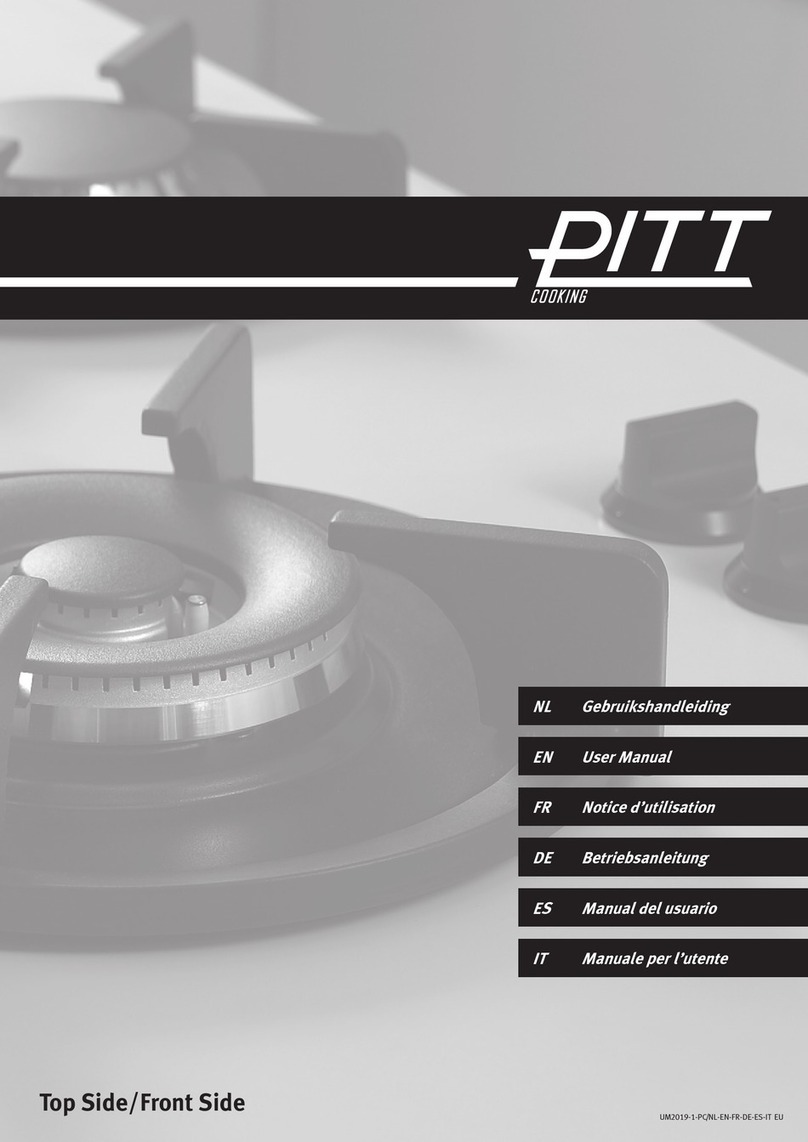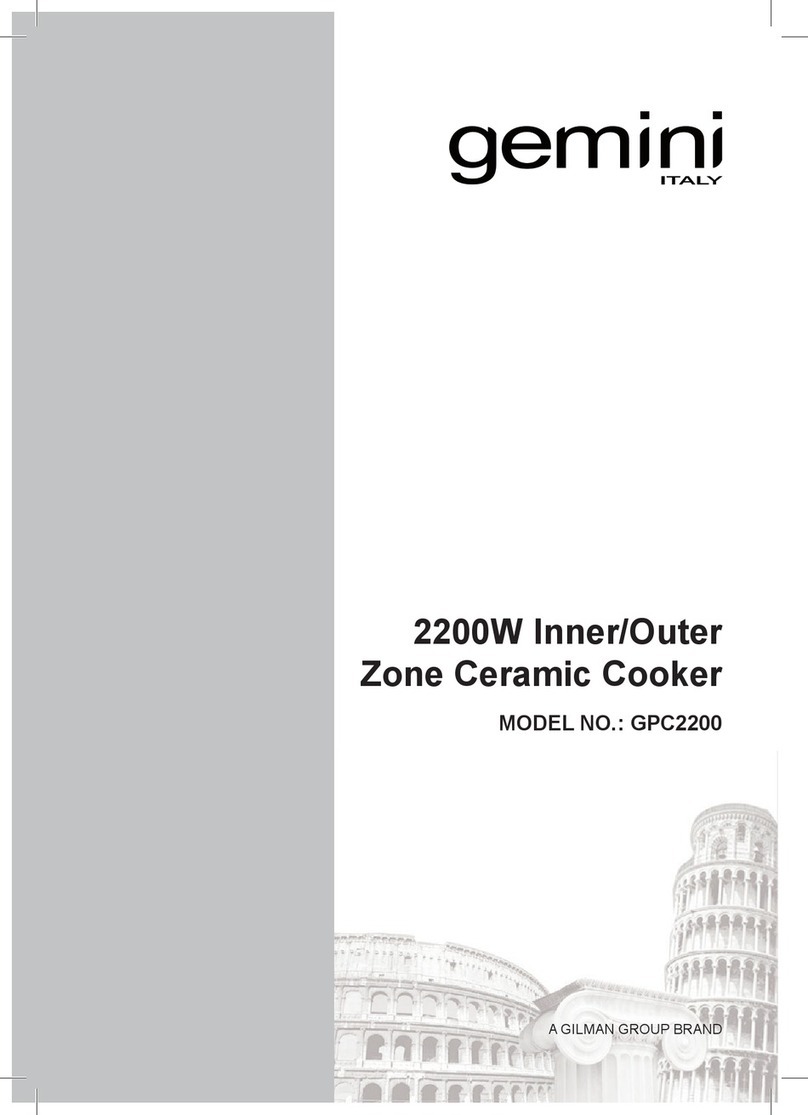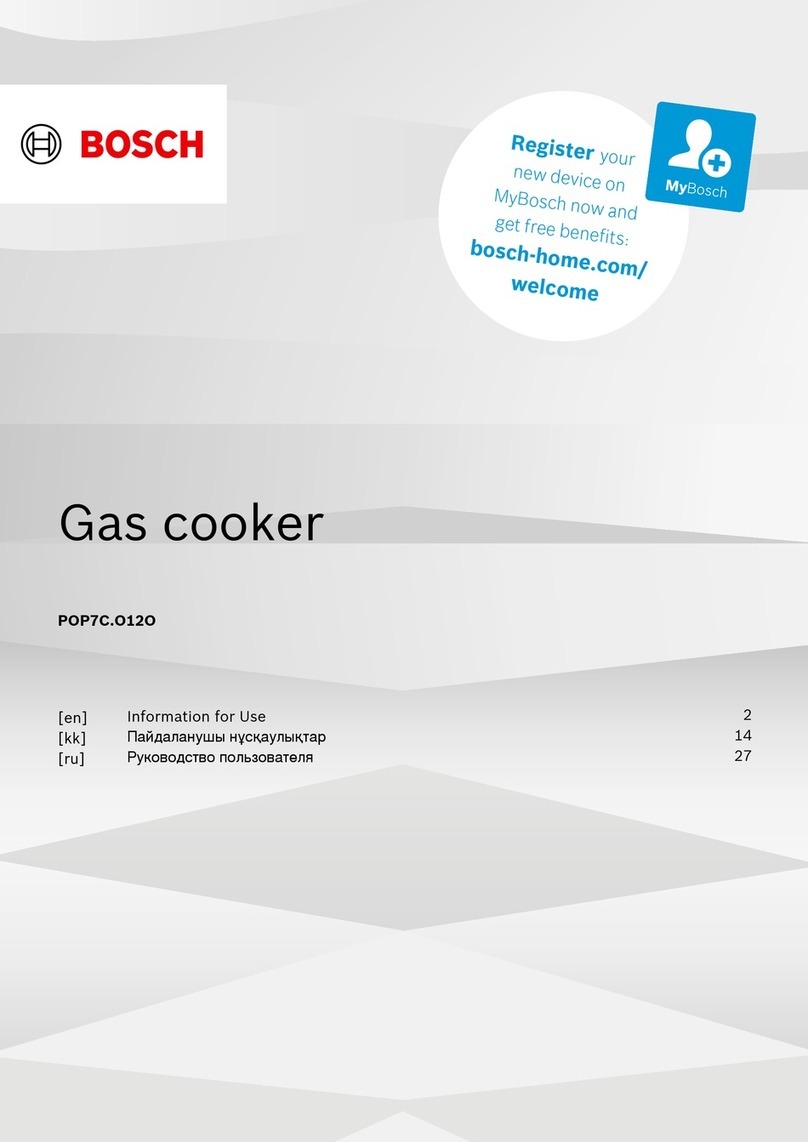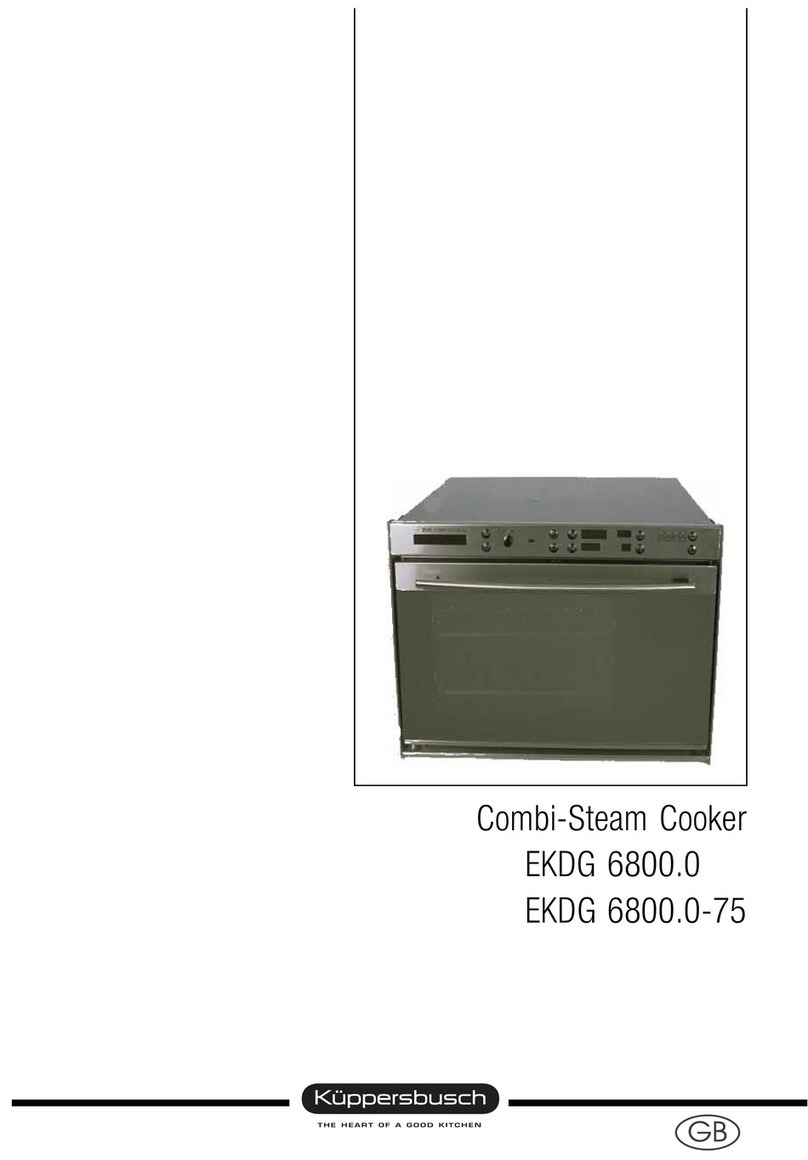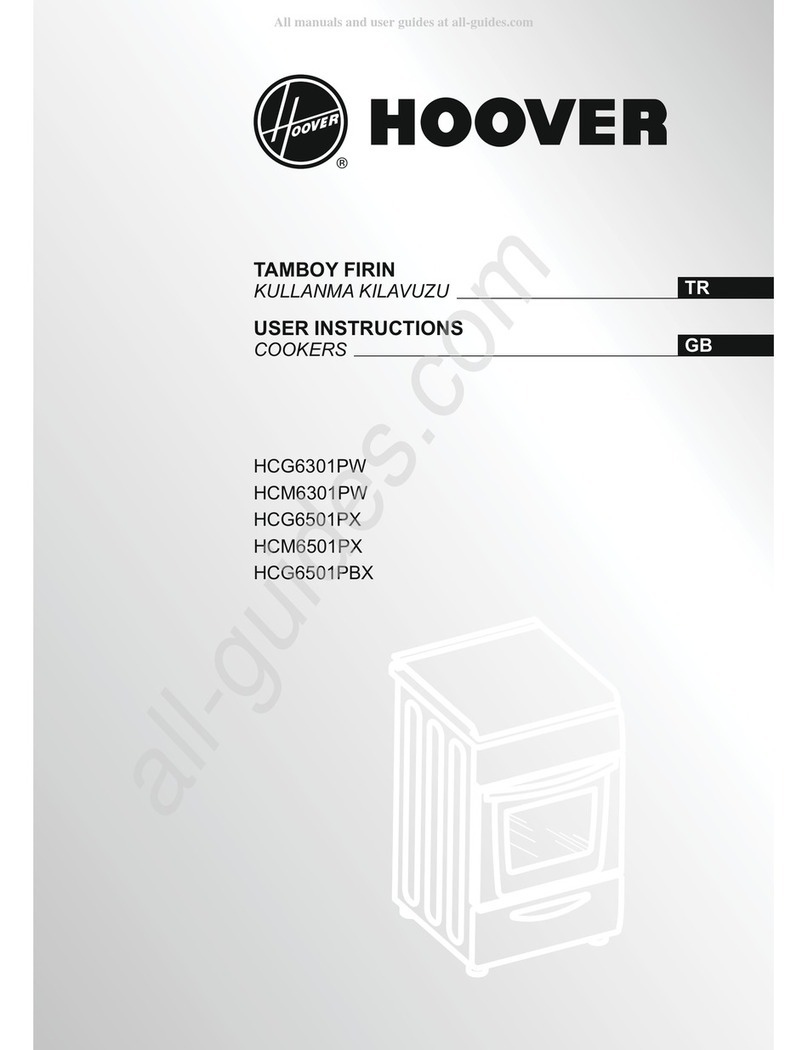4
IMPORTANT PRECAUTIONS AND RECOMMENDATIONS
After having unpacked the appliance, check to ensure that it is not damaged and that the
oven door closes correctly. In case of doubt, do not use it and consult your supplier or a
Packing elements (i.e. plastic bags, polystyrene foam, nails, packing straps, etc.) should
not be left around within easy reach of children, as these may cause serious injuries.
Do not attempt to modify the technical characteristics of the appliance as this may
become dangerous to use.
Do not carry out cleaning or maintenance operations on the appliance without having
previously disconnected it from the electric power supply.
After use, ensure that the knobs are in the off position.
Keep children away from the appliance when it is in use.
WARNING: Accessible parts will become hot when in use. To avoid burns and scalds,
young children should be kept away.
Young children should be supervised to ensure that they do not play with the applian-
ce.
Children, or persons with a disability which limits their ability to use the appliance,
should have a responsible person to instruct them in its use. The instructor should
surroundings.
During and after use of the appliance, certain parts will become very hot. Do not touch
hot parts. Care should be taken to avoid touching heating elements inside the oven.
Make sure that electrical cables connecting other appliances in the proximity of the
cooker cannot come into contact with the hob or become entrapped in the oven door.
Do not allow heavy or sharp objects to drop on the glass ceramic hob. If the hob is
cracked or otherwise damaged by falling objects etc., disconnect the electrical power
cord and call Customer Service.
Do not scratch the hob with sharp objects. Don’t use the hob as a work surface.
WARNING: When correctly installed, your product meets all safety requirements laid
down for this type of product category. However special care should be taken around
the rear or the underneath of the appliance as these areas are not designed or inten-
ded to be touched and may contain sharp or rough edges, that may cause injury.
Do not line the oven walls with aluminium foil. Do not place baking trays or the drip tray
on the base of the oven chamber.
Fire risk!
Always use oven gloves when removing the shelves and food trays from the oven
whilst hot.
Do not hang towels, dishcloths or other items on the appliance or its handle – as this
Clean the oven regularly and do not allow fat or oils to build up in the oven base or tray.
Remove spillages as soon as they occur.
Do not stand on the open oven door.




















